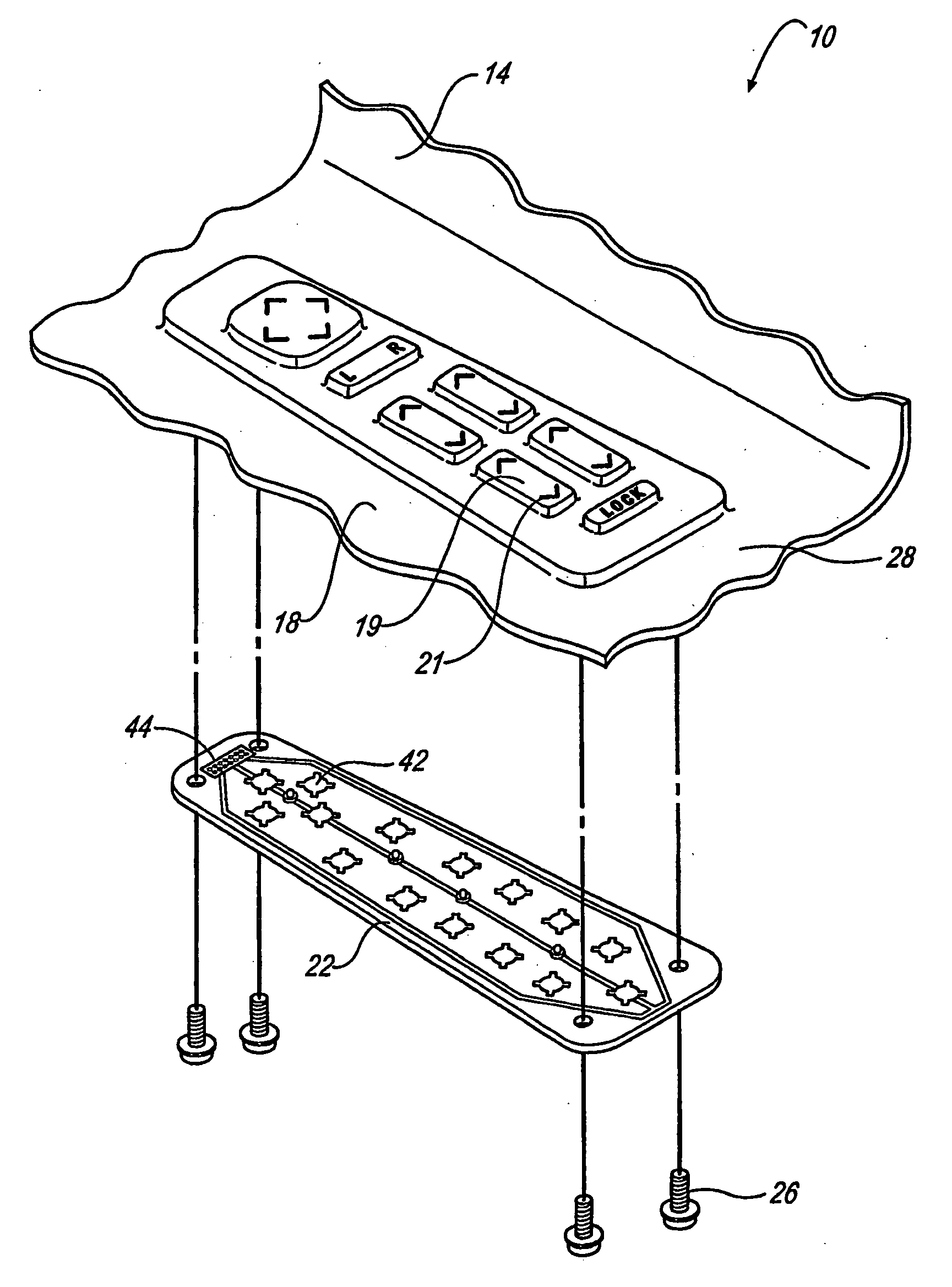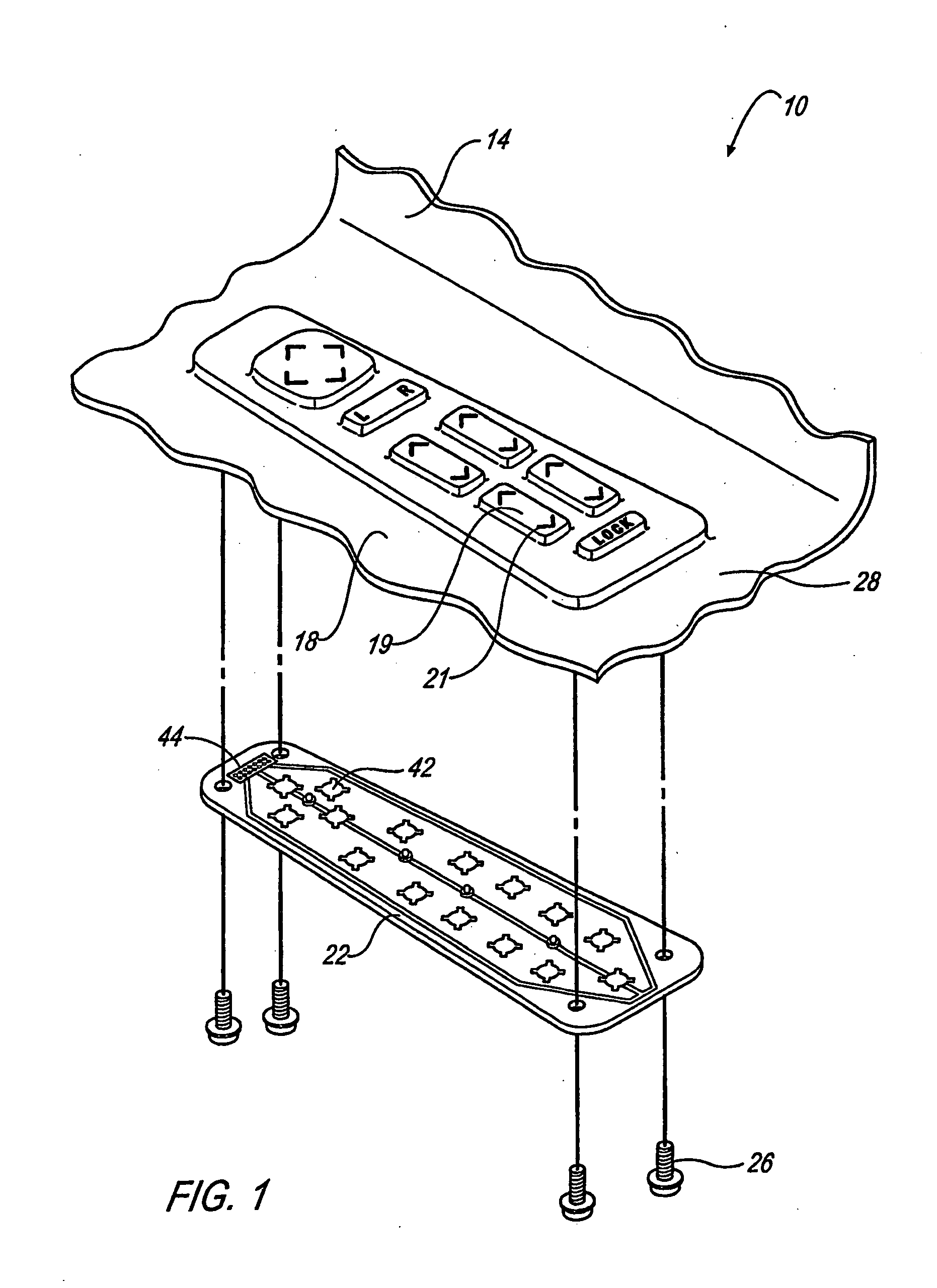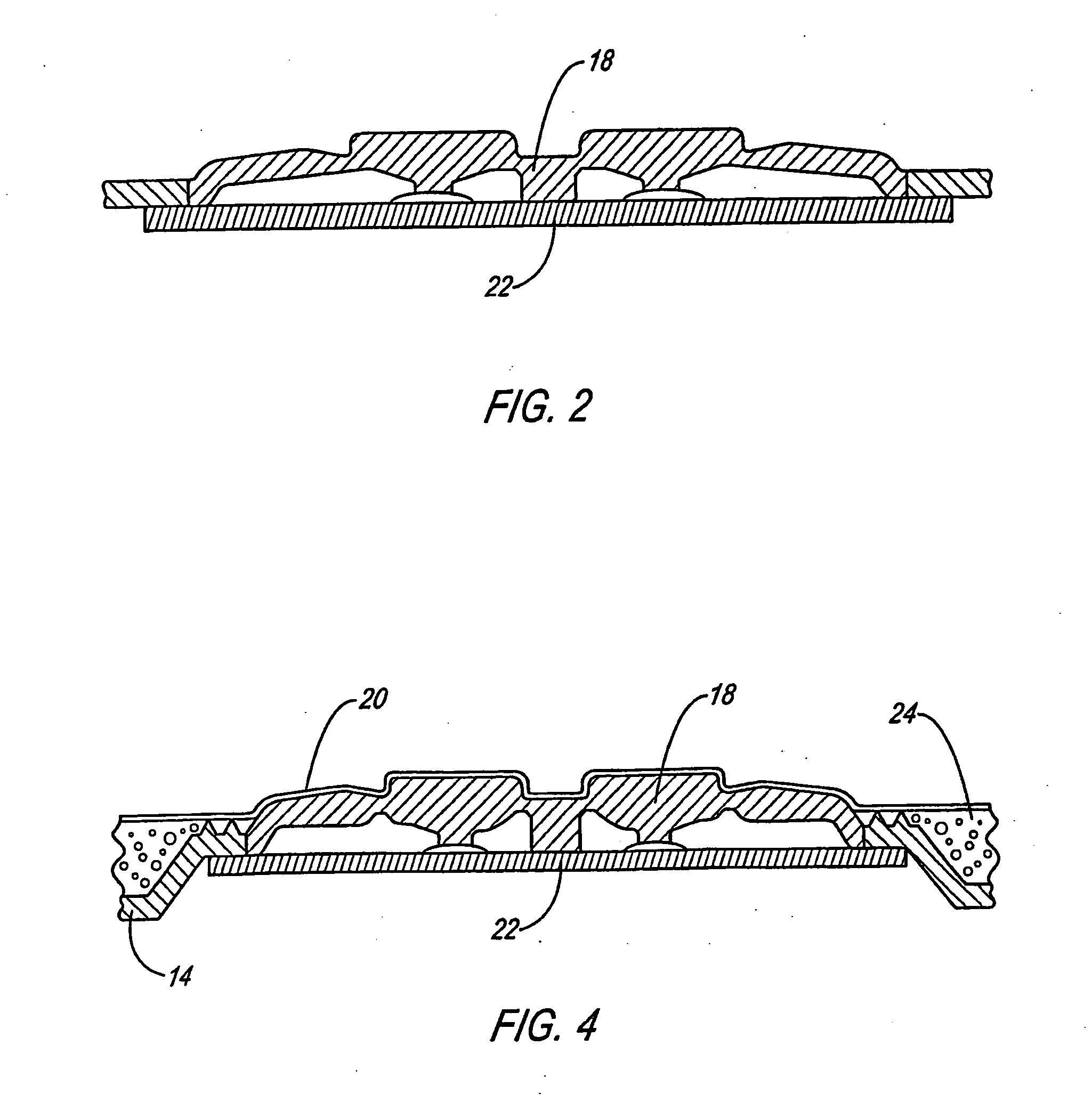Multi-shot injection molded component and method of manufacture
a technology of injection molding and components, applied in the field of automotive components, can solve the problems of non-integral switches producing fit and finish problems, affecting reducing the quality of components, so as to reduce the cost, reduce the quality problem, and facilitate the effect of manufacturing
- Summary
- Abstract
- Description
- Claims
- Application Information
AI Technical Summary
Benefits of technology
Problems solved by technology
Method used
Image
Examples
Embodiment Construction
[0019] The invention relate to a method of manufacturing a component, generally illustrated throughout the figures at 10, using a multi-shot injection molding technique. The multi-shot molding technique uses a mold cavity (not shown) that can be altered between a first volume and a second volume. Although the subject invention involves the use of a mold cavity that can be altered from a first volume to a second volume, the invention is not limited by the number of volumes in which the mold cavity can be altered, and that the invention can be practiced with a mold cavity that be altered into any desirable number of volumes needed to form the component. In general, the mold cavity is initially positioned having the first volume for receiving a first material. Then, the first material is injected from a nozzle (not shown) of a type well-known in the art into the first volume of the mold cavity. While the first material is curing and still in a reactive state forming a core portion 14, ...
PUM
| Property | Measurement | Unit |
|---|---|---|
| flexible | aaaaa | aaaaa |
| color | aaaaa | aaaaa |
| material property characteristics | aaaaa | aaaaa |
Abstract
Description
Claims
Application Information
 Login to View More
Login to View More - R&D
- Intellectual Property
- Life Sciences
- Materials
- Tech Scout
- Unparalleled Data Quality
- Higher Quality Content
- 60% Fewer Hallucinations
Browse by: Latest US Patents, China's latest patents, Technical Efficacy Thesaurus, Application Domain, Technology Topic, Popular Technical Reports.
© 2025 PatSnap. All rights reserved.Legal|Privacy policy|Modern Slavery Act Transparency Statement|Sitemap|About US| Contact US: help@patsnap.com



